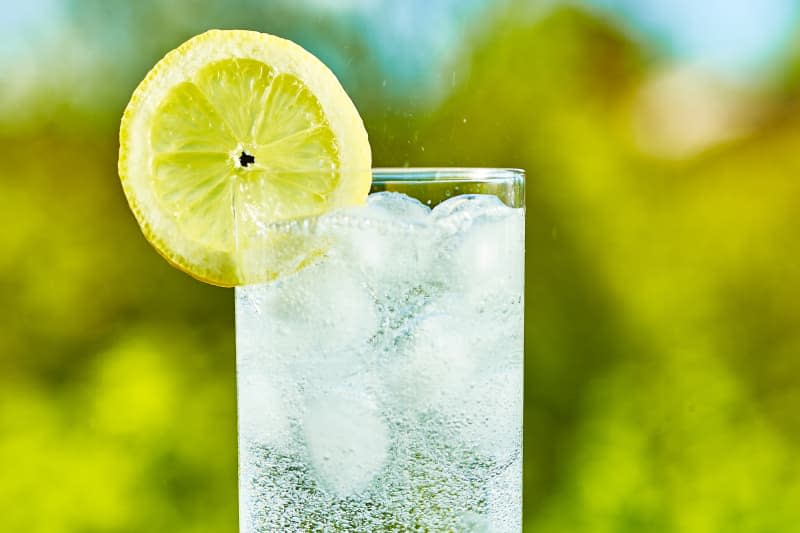People Are Tossing Their Seltzer After This Disturbing Study

We see it time and time again. A new study is released about the food we regularly consume or the items we use — like pesticide residue on produce or microplastic particles in our cutting boards — and consumers freak out. Should they stop eating strawberries? Replace their cutting boards? Now, sparkling water has come into question after a study that found the bubbly favorite contains “forever chemicals” has resurfaced.
Back in 2020, Consumer Reports conducted a study to test the PFAS levels in 47 different bottles of water, 12 of which were carbonated samples. Many of those carbonated samples, including Poland Spring and Topo Chico, had traces of PFAS in them, ranging from 1 part per trillion (ppt) to around 10 ppt.
Known as “forever chemicals” because they are nearly indestructible, PFAS — short for per- and poly-fluoroalkyl substances — are able to withstand water, oil, grease, and heat. They’re typically used in food packaging, but can also be found in cooking appliances and electronics (even our water-resistant rain gear). Traces can be found in the water we drink, given the ways these chemicals seep into our natural resources through landfills, sewer dumps, and more. So yes, these chemicals can be found in our sparkling water, but they’re also found in a variety of other items we use on the daily.
The concern with PFAS that’s causing frantic debate and reactions from consumers has to do with the potential outcome these chemicals can have on our long-term health. Some peer-reviewed research has linked PFAS with increased risk of cancers, developmental effects on children, reproductive issues such as fertility, and interference on the body’s immune system, hormones, and cholesterol levels. Because of this, the Biden-Harris Administration recently announced a national drinking water standard to cap the maximum contaminant levels to 4 ppt.
Should Consumers Be Worried About Seltzer?
Although there are some studies that have linked PFAS to increased risk of chronic diseases and interference with the body’s immune system and hormones, the truth is that research is still ongoing and there’s not enough evidence to make concrete claims — especially when it comes to low-level exposure of PFAS, such as drinking sparkling water.
In reality, PFAS are present in almost everything we touch or consume. According to the United States Environmental Protection Agency (EPA), PFAS can be present in our water, soil, air, and, yes, our food. Some of the most common materials containing traces of PFAS include drinking water, food packaging, fire extinguishing foam, household cleaning products, stain-resistant clothing, hygienic products (like shampoo and dental floss), non-stick cookware, and any food that has been exposed to water or livestock contaminated by PFAS, like fish or dairy products. Sometimes even the air we breathe can contain PFAS.
This particular study by Consumer Reports refers to the guidelines of The Environmental Working Group, which consider consuming more than 1 ppt of PFAS to be dangerous, while the USDA’s limit is 70 ppt. According to the USDA, at 70 ppt or lower “no adverse health effects are anticipated to occur.” These particular guidelines can vary from state to state. But if you want to focus on drinking sparkling waters with lower levels of PFAs, you can find the list of carbonated brands with PFAs under 1 ppt in the original Consumer Reports study.
Editor’s note: An earlier version of this story incorrectly referenced the Consumer Reports’ study findings as being found in “canned seltzer”.
This article originally published on The Kitchn. See it there: People Are Tossing Their Seltzer After This Disturbing Study

